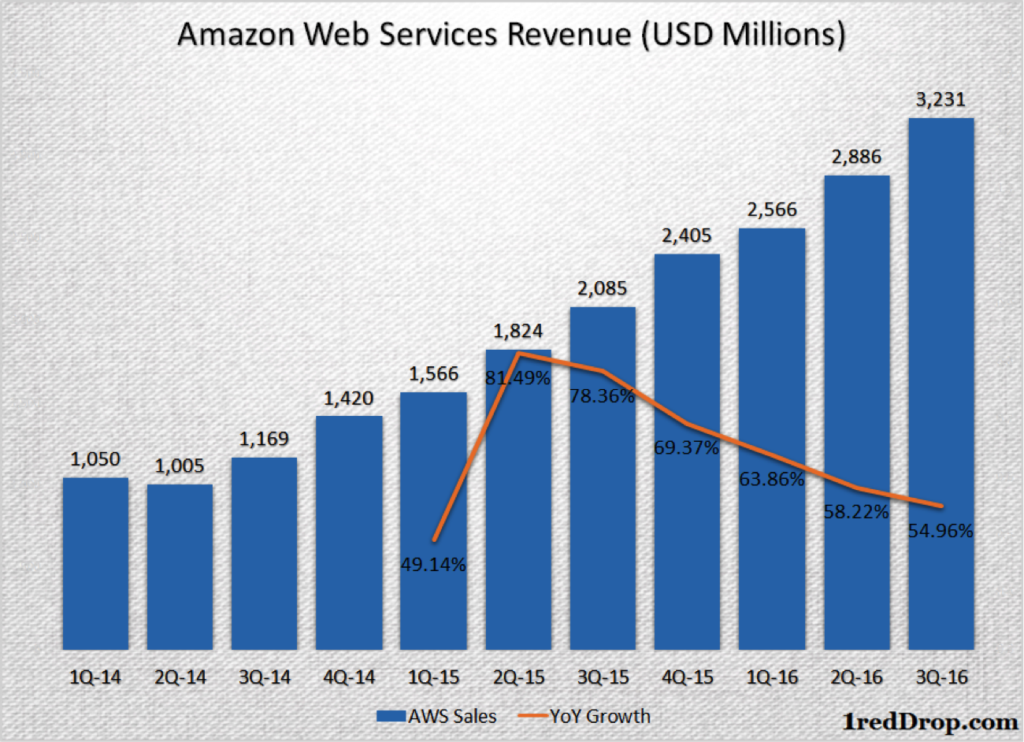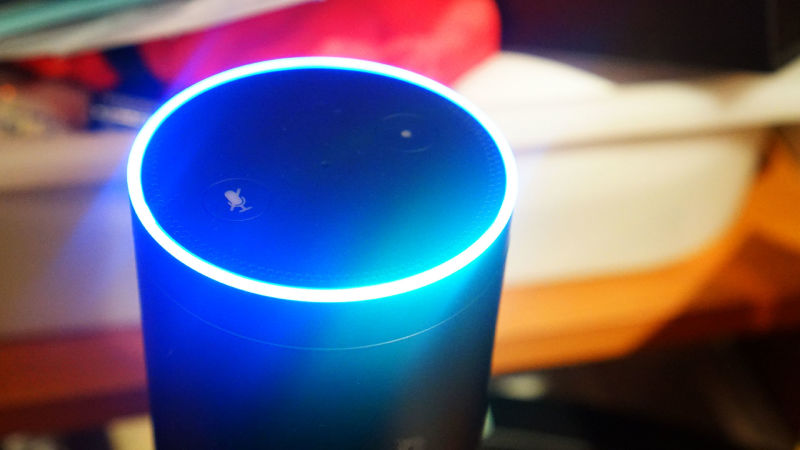Amazon is great at giving away free stuff. One look at the Amazon Prime benefits list will tell you that. Even with their cloud infrastructure initiative, Amazon Web Services (AWS), offers free tiers with nearly every major product. And now, Amazon Alexa Voice Service APIs can be used by developers to integrate the smart voice assistant with their own products.
How is Amazon able to do this?
To answer that question, we need to look at Amazon’s revenue model and how it’s designed to bring in customer traffic.
Amazon’s core retail business has several channels that bring new customers, from online advertising to affiliate programs. In fact, Amazon spent $157.7 million on Google search ads in the U.S. alone in 2013.
And that continues to grow year after year, but it is still dwarfed by Amazon’s near hundred billion dollars in retail sales every year. Obviously, $200 million on advertising isn’t going to generate $100 billion dollars, so what’s Amazon’s real secret?
For their retail business, that secret goes by the name of Amazon Prime. Not only does Prime bring in additional revenues to offset what Amazon spends on advertising, but it also encourages shoppers to spend more than non-Prime shoppers, on average.
A study by Consumer Intelligence Research Partners (CIRP) showed last year that an Amazon Prime member spends an average of $1,200 on Amazon products and services every year. Compared to that, a non-member only spends about $500. That’s less than half.
So, by offering tons of benefits on Prime memberships, Amazon is effectively getting more than twice the revenue per shopper.
What about Amazon Web Services?
AWS operates in much the same way, with some minor differences. The cloud infrastructure unit of Amazon offers free tiers on practically everything. Here’s what the company says about its free tier limits:
“All services that offer a free tier have limits on what you can use without being charged. Many services have multiple types of limits. For example, Amazon EC2 has limits on both the type of instance you can use, and how many hours you can use in one month. Amazon S3 has a limit on how much memory you can use, and also on how often you can call certain operations each month. For example, the free tier covers the first 20,000 times you retrieve a file from Amazon S3, but you are charged for additional file retrievals. Each service has limits that are unique to that service.
Some of the most common limits are by time, such as hourly or by the minute, or by requests, which are the requests you send to the service, also known as API operations.”
So, every company – no matter how big or small – and every individual user is eligible for the free tier. This costs Amazon a lot of money. However, that expense is considered as the cost of doing business. The end result, however, is that AWS has been growing at a tremendous rate since it was launched as an independent unit under the Amazon Technologies Inc. umbrella.
 As of the most recent reported quarter (Q3-2016), AWS crossed the $3 billion per quarter revenue mark, and we expect the next quarter’s results to come in at between $3.5 and $3.6 billion when the company announces its Q4 earnings two days from now, on February 2, 2017.
As of the most recent reported quarter (Q3-2016), AWS crossed the $3 billion per quarter revenue mark, and we expect the next quarter’s results to come in at between $3.5 and $3.6 billion when the company announces its Q4 earnings two days from now, on February 2, 2017.
The third pillar of Amazon, Amazon Alexa, is still a newbie to the revenue game. She doesn’t contribute much at this point, but she will, eventually.
How do we know that? Well, considering how many integrations we’ve seen Alexa getting into these past months, that’s inevitable. As Amazon explained in the section above, each service has a set limit on the free tier.
Now, consider the fact that Amazon Alexa is actually a Software-as-a-Service (SaaS) product. That means it’s served via the cloud, but it also means that a gazillion requests are hitting their cloud servers every second. Each time you give Alexa a voice command, it’s considered as a request. Although the free tiers offer free requests up to a point, anything more than that is chargeable.
Let’s take AWS Lambda, for example. It is a serverless compute service where the only thing you’re responsible for is bringing the code. AWS Lambda runs the code for you on an ‘as requested’ basis, manages all the compute processes, optimizes the resources, provides encryption and just about everything else you need.
When you create a function for an Alexa Skill on AWS Lambda, Amazon charges you on a per-request basis. The first 1 million requests are free, and after that you pay 20 cents for each additional 1 million requests.
Now, imagine a company like LG integrating Alexa into its smart refrigerators – that’s just one of the many integrations being developed with Alexa at the core. Let’s say LG sells about 10 million of these refrigerators in 2017. At a really conservative estimate, each refrigerator will send dozens of requests a day, possibly more. Multiply that by 10 million and you’re looking at perhaps close to half a billion requests per day.
That’s for one line of products from one company. Now, imagine hundreds of products with Alexa integrated into them either as a Lambda function or as a web service. Either way the request gets sent to Amazon’s cloud servers because that’s where Alexa’s compute resources live.
Extrapolating that to an actual revenue number will be extremely difficult, but the example shows just how powerful Amazon’s revenue strategy is. As a retailer, they know volume eventually converts to profitability, and that’s the same approach the company used with Prime, and then with AWS, and now with Amazon Alexa.
As such, the concept of “give it away for free and the customers will come” has been working really well for Amazon in multiple areas, and it will serve them once again with Amazon Alexa.
Amazon is the world’s biggest cloud infrastructure provider (IaaS), but it does not have a significant presence in the Software as a Service and Internet of Things segment. Amazon Alexa will hopefully change that, and strengthen Amazon’s cloud revenues even further over the next several years. The integrations are only happening now, so it will take time for these to yield monetary results for Amazon. But it will come.
Thanks for reading our work! Please bookmark 1redDrop.com to keep tabs on the hottest, most happening tech and business news from around the world. On Apple News, please favorite the 1redDrop channel to get us in your news feed.



